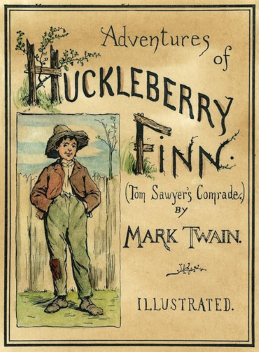Teaching Twain — and teaching students to speak for themselves.

In response to a recent state law, the schools of Escambia County, Florida, have issued a list of 1,600 books that will not be available to students until the school board has determined the content is appropriate for the grade level and age group. Titles removed include The Adventures of Sherlock Holmes and the Memoirs of Sherlock Holmes, A Tale of Two Cities, The Encyclopedia of Mythology: Gods, Heroes, and Legends of the Greeks and Romans, Guinness World Records 2000, and Webster’s Dictionary & Thesaurus for Students.
In 35 years of teaching in New York City, I only had two parents request alternate readings.
The first was an evangelical Christian mother who objected to a unit on creation myths, convinced I was trying to convert her daughter to blasphemy. After a slightly contentious conversation, and against my better judgment, I agreed to an alternative assignment for her daughter. Then the young lady rebelled against both Mom and me by refusing to do any reading at all.
The second parent came in to discuss her daughter’s assignment to read Mark Twain’s Adventures of Huckleberry Finn. “I’ve read the book,” this Black mother told me. “I get the satire. I know it’s a classic. But Mariella is 14 years old.”
Adventures of Huckleberry Finn is among my favorite books. When I discovered it, I was about 14 myself, living in the kind of dully racist suburb where the indignities were so ingrained and considered so slight — over little things like housing and education — that they weren’t talked about. I was already tutored in the “white savior” mythology of American film and literature and was both troubled and fascinated by the complex relationship Twain creates between Jim and Huck.
I had taught the book, I thought successfully, a number of times. I prepared the class with lengthy discussions of the story’s language — both its use of colloquial voices and the omnipresence of the N-word. This preparation included assigning essays by Ta-Nehisi Coates, Langston Hughes, and New York high school students. I paired Twain with Frederick Douglass’ Narrative of the Life of Frederick Douglass: An American Slave and Octavia E. Butler’s Kindred so that my students would encounter views of slavery more brutal than the fairly gentle one Twain presents.
But this parent’s questions unsettled me: “Why should my daughter have to read that word, hear it read aloud in class every day? Are there no other classics worth her time?”
In the end, she did not request an alternative — her daughter had forbidden it, unwilling to be isolated from her peers. The girl continued to participate brilliantly in class — cross-examining Twain, skeptical that his satire was sharp enough to balance the indignities Jim was put through. She wrote a very good essay in the same vein.
If, like medicine, the first rule of teaching is “Do no harm,” I probably managed to obey it that time. But I was haunted by Mom’s questions and never taught the book again — though I continued with Douglass and Butler in other contexts.
I think of this situation whenever I read about books being reviewed or banned — and especially when I read of school districts and whole states removing African American Studies courses. Most controversial books are controversial for a reason, though the reasons may vary. The decision to teach challenging works should be carefully considered, but that consideration should take place close to schools, to classrooms, and to students.
The decision should be made by teachers.
I wish I’d pushed back harder on the first mother. Her daughter needed an ally. Even if Mom had ultimately won the argument, I gave in too easily, acceding to the idea that her child could be easily manipulated. Someone needed to have more faith in that young woman’s faith and intelligence. I did not recognize that the someone was me.
The second instance was more complicated. Reading Huck Finn with a group of mostly white peers gave my young Black student a chance to think about and express views on race and language that she might not otherwise get. But it came at a cost that I have no way of calculating, and I cannot honestly say that, on balance, it was a positive experience for her. I’m confident that other students in the room learned valuable lessons from the book and from their conflicted classmate, but it may not have been fair to put the girl in that position.
I do know that to take that decision away from me would’ve made my classroom a more barren, boring, and thoughtless place. Even given my own concerns, there was no one in a better position to shape that curriculum and to guide the kids through it. By taking those decisions seriously over the course of my career, I helped students think through their own ideas about race, class, sexuality, suicide, violence, political power, and family dynamics, and to express them in their own voices. I helped them become themselves, which is a fundamental purpose of education.
You can’t do that from the state legislature or the city council. You have to be in the classroom.
John P. Loonam has a Ph.D. in American literature from the City University of New York and taught English in New York City public schools for over 35 years. He has published fiction in various journals and anthologies, and his short plays have been featured by the Mottola Theater Project several times. He is married and the father of two sons; the four have lived in Brooklyn long enough to be considered natives by anyone but his neighbors.

